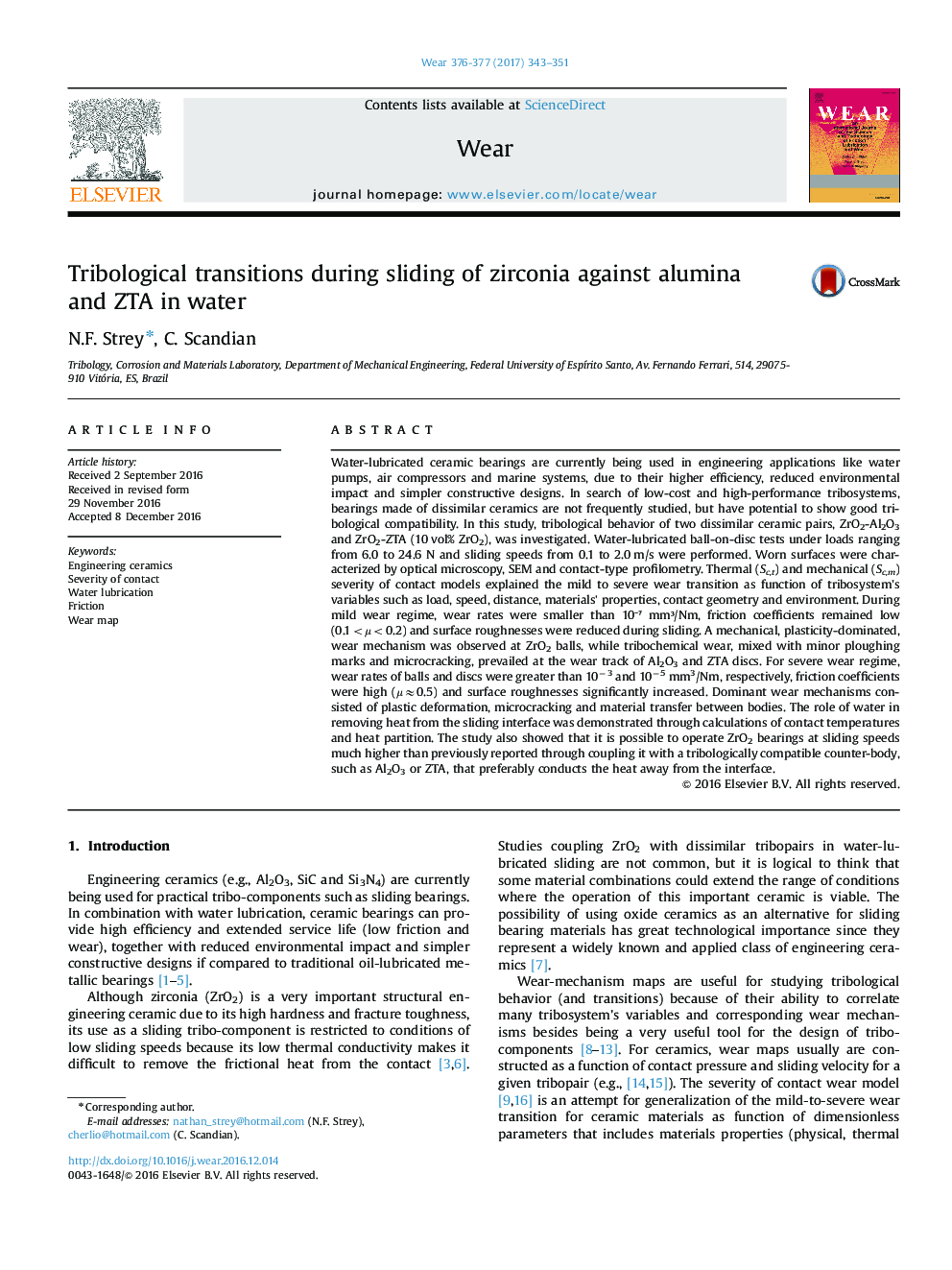| کد مقاله | کد نشریه | سال انتشار | مقاله انگلیسی | نسخه تمام متن |
|---|---|---|---|---|
| 4986702 | 1454953 | 2017 | 9 صفحه PDF | دانلود رایگان |
عنوان انگلیسی مقاله ISI
Tribological transitions during sliding of zirconia against alumina and ZTA in water
دانلود مقاله + سفارش ترجمه
دانلود مقاله ISI انگلیسی
رایگان برای ایرانیان
کلمات کلیدی
موضوعات مرتبط
مهندسی و علوم پایه
مهندسی شیمی
شیمی کلوئیدی و سطحی
پیش نمایش صفحه اول مقاله

چکیده انگلیسی
Water-lubricated ceramic bearings are currently being used in engineering applications like water pumps, air compressors and marine systems, due to their higher efficiency, reduced environmental impact and simpler constructive designs. In search of low-cost and high-performance tribosystems, bearings made of dissimilar ceramics are not frequently studied, but have potential to show good tribological compatibility. In this study, tribological behavior of two dissimilar ceramic pairs, ZrO2-Al2O3 and ZrO2-ZTA (10 vol% ZrO2), was investigated. Water-lubricated ball-on-disc tests under loads ranging from 6.0 to 24.6 N and sliding speeds from 0.1 to 2.0 m/s were performed. Worn surfaces were characterized by optical microscopy, SEM and contact-type profilometry. Thermal (Sc,t) and mechanical (Sc,m) severity of contact models explained the mild to severe wear transition as function of tribosystem's variables such as load, speed, distance, materials' properties, contact geometry and environment. During mild wear regime, wear rates were smaller than 10â»â· mm³/Nm, friction coefficients remained low (0.1<µ<0.2) and surface roughnesses were reduced during sliding. A mechanical, plasticity-dominated, wear mechanism was observed at ZrO2 balls, while tribochemical wear, mixed with minor ploughing marks and microcracking, prevailed at the wear track of Al2O3 and ZTA discs. For severe wear regime, wear rates of balls and discs were greater than 10â3 and 10â5 mm3/Nm, respectively, friction coefficients were high (µâ0.5) and surface roughnesses significantly increased. Dominant wear mechanisms consisted of plastic deformation, microcracking and material transfer between bodies. The role of water in removing heat from the sliding interface was demonstrated through calculations of contact temperatures and heat partition. The study also showed that it is possible to operate ZrO2 bearings at sliding speeds much higher than previously reported through coupling it with a tribologically compatible counter-body, such as Al2O3 or ZTA, that preferably conducts the heat away from the interface.
ناشر
Database: Elsevier - ScienceDirect (ساینس دایرکت)
Journal: Wear - Volumes 376â377, Part A, 15 April 2017, Pages 343-351
Journal: Wear - Volumes 376â377, Part A, 15 April 2017, Pages 343-351
نویسندگان
N.F. Strey, C. Scandian,